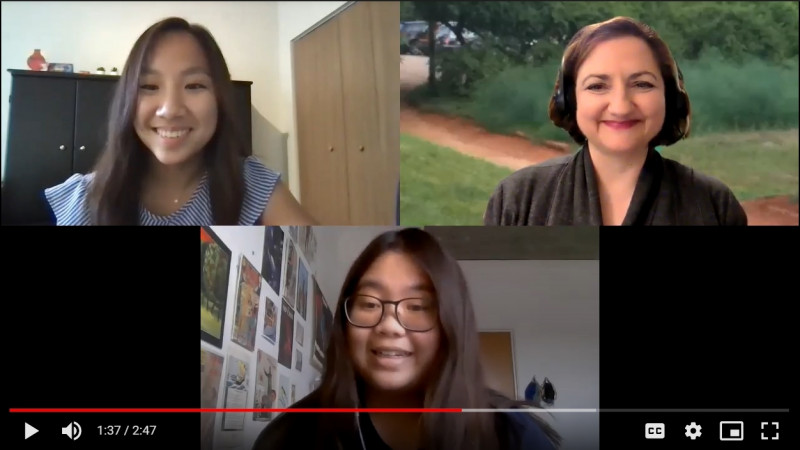When I applied to the Michigan Library Scholars program to work for the “A Survey of Global Open Access Policies” project, I took it as an opportunity to learn more about a particular side of publishing and law that I didn’t know much about. As someone who is double majoring in Political Science and Creative Writing & Literature, I have always been interested in how the law interacts with people’s creations — regardless of whether those creations are novels, pieces of artwork, or video games. For some reason, though, I’d never considered works of research under the same umbrella. Through this project, I’ve learned about the importance of open access policies and how they fuel innovation and generate new knowledge.
Before my fellow intern Madelin Chau and I could start working on our project, we had to develop an understanding of what open access means. To do this, we read Peter Suber’s Open Access. To briefly summarize: open access is a set of practices that minimizes barriers of all types — like price tags and copyright — to works of research.
The main goal of “A Survey of Global Open Access Policies'' was to examine different governments’ policies on open access. However, after it was decided that the scope of this premise was potentially a little too broad, our project’s focus switched to analyze the open access policies of members of the Open Research Funders Group (ORFG), a group of philanthropic organizations that have committed to promoting open access as an initiative of the Scholarly Publishing and Academic Resources Coalition (SPARC). Members of ORFG include organizations like the Bill and Melinda Gates Foundation, the Alfred P. Sloan Foundation, and The Howard Hughes Medical Institute.
As a result of this shift in focus, our first step was to collect the open access policies of ORFG members from the different foundation websites. Through this initial search, Madelin and I noticed that while some foundations displayed their open access policies or statements on distinct web pages, other foundations seemingly lacked anything related to open access on a surface level, or only had general statements regarding open access and sharing knowledge. When we decided to examine this issue further, we were able to find a few more foundations’ open access policies or statements by combing through these websites more meticulously. However, this brought up another issue: even if we were successful in finding a page or document that demonstrated a specific foundation’s stance on open access, it was difficult to navigate there from the main webpage. Some foundations’ open access policies or statements were located on pages that were only accessible from the website’s search bar. Others were hidden in .PDF files meant for grantees. Additionally, some foundations’ websites had distinct issues with UX design.
In order to more easily standardize our observations, we created a spreadsheet detailing our findings on each ORFG member. We outlined common traits that different foundations shared, such as the location of their open access policy or statement being buried or apparent. To find a better solution to these websites’ accessibility issues, we also identified sections of websites that would better house policies or statements since many of these foundations have web pages that highlight their organization’s principles and vision statements.

A screenshot of our spreadsheet on ORFG member open access policies. Only the categories are pictured here.
Once we completed our spreadsheet, we had several opportunities to meet with Dr. Erin McKiernan, the Community Manager of the ORFG, to discuss what we had found. Ultimately, our main deliverables were an executive summary and a brief video — both of which offered our observations and suggestions to the various ORFG members.

A screenshot of the video we created for the ORFG.
Although the main deliverables of our project were our executive summary and video for the ORFG, Madelin and I were also able to meet numerous other times with Dr. Erin McKiernan and Katie Steen, Manager of Public Policy and Advocacy at the Scholarly Publishing and Academic Resources Coalition (SPARC). In between our work on the ORFG and the end of the internship, we worked with SPARC and Environment and Climate Change Canada (ECCC) to research federal open access policies in a similar fashion to how we had examined ORFG member policies.
One of the most important takeaways I had from working on our project is how important and relevant open access is to my experience as an activist and student interested in law. Before we started our research, I had a vague concept of what open access was. Now, I understand that open access is absolutely necessary in creating a more equitable world. There should not be barriers to new knowledge.
This project also brought accessibility and UX design to the forefront of my mind, especially in terms of the Internet. Because I’d spent so much time sifting through websites only to turn out unsuccessful in finding what I’d been looking for, I realized how a lack of consideration for the user experience can act as its own barrier, too.
As my time with the Michigan Library Scholars program comes to an end, I want to emphasize how impactful this internship was for me. I am grateful for all the librarians and workshop presenters who I interacted with — the knowledge and expertise I gained from you has already proven to be useful, and I know that I will carry it with me into the future. I would like to thank Gabriel Duque for adeptly coordinating the Michigan Library Scholars program and checking in on me every week. I also want to thank my fellow intern Madelin Chau for being incredibly helpful and insightful as we delved into our research. And, of course, I especially want to thank my mentor Melissa Levine, Director of the U-M Copyright Office, for introducing me to open access and for being so patient and understanding of any questions I had about open access terms, museums, and law.